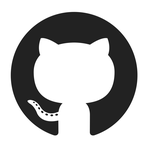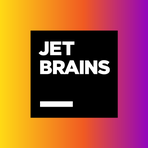The Evolution of .NET: A Deep Dive into the Latest Developments
September 7, 2024, 4:30 am

Location: United States, California, San Francisco
Employees: 1001-5000
Founded date: 2008
Total raised: $350M
The world of software development is ever-changing. In this landscape, .NET stands as a robust framework, evolving to meet the demands of modern applications. As we step into 2024, Microsoft has unveiled significant updates that promise to enhance developer experience and application performance. This article explores the latest developments in .NET, including the upcoming .NET 9 release, the advantages of F#, and the integration of Kotlin into the backend landscape.
.NET 9 is on the horizon, with Preview 7 already making waves. Microsoft continues to refine its runtime, SDK, and libraries. Each iteration brings a treasure trove of features aimed at boosting performance and functionality. The focus remains clear: make developers' lives easier while enhancing the capabilities of applications. The anticipation builds as the .NET Conf 2024 approaches, scheduled for November 12-14. This event is not just a conference; it’s a celebration of innovation and collaboration in the .NET community.
One of the standout articles in the latest digest discusses the potential of F# as a compelling alternative to Python. F# is often overshadowed by its more popular counterpart, but it offers unique advantages. Its functional programming paradigm allows for cleaner, more maintainable code. This makes it an excellent choice for scripting, side projects, and enterprise applications. The article highlights five reasons why F# deserves a second look, especially for developers seeking efficiency and clarity in their code.
Meanwhile, the integration of large language models (LLMs) into the .NET ecosystem is gaining traction. A recent article illustrates how developers can run models like ChatGPT locally using C#. This capability opens new doors for AI-driven applications, allowing developers to harness the power of machine learning without relying on external services. It’s a game-changer for those looking to innovate within the .NET framework.
Docker continues to be a vital tool for developers, and the latest insights on creating multi-architecture images are invaluable. Combining x64 and arm64 images into a single Docker image streamlines deployment processes. This flexibility is crucial in today’s diverse computing environments, where applications must run seamlessly across various architectures.
Static code analysis is another hot topic. As codebases grow, maintaining quality becomes paramount. The digest features an article on improving code quality in C# through static analysis. This technique automatically identifies errors, vulnerabilities, and security flaws, ensuring that developers can deliver robust applications. Tools like PVS-Studio are highlighted as essential allies in this endeavor, providing insights that enhance code reliability.
The history of C# is also explored, shedding light on its evolution and significance in the software industry. Understanding where a language comes from can provide valuable context for its current capabilities and future potential. C# has grown from a simple programming language to a cornerstone of enterprise development, and its journey is a testament to the power of adaptability.
In the realm of gaming, the Flax Engine is gaining attention. This engine, likened to a child of Unreal and Unity, offers exciting possibilities for game developers. Analyzing its source code reveals intriguing challenges that can be tackled with static analysis tools. This exploration not only enhances understanding but also fosters innovation in game development.
The introduction of new debugging and diagnostic features in Visual Studio 17.11 is another highlight. Improved performance during debugging sessions and the integration of AI tools make this version a must-have for developers. These enhancements reflect Microsoft’s commitment to listening to user feedback and continuously improving the development experience.
Caching strategies for ASP.NET applications are also discussed. Effective caching can significantly enhance application performance, and the article outlines various methods to implement caching solutions. This is crucial for developers aiming to optimize their applications and deliver a seamless user experience.
As we look ahead, the proposed addition of type unions in C# and nullness checking in F# 9 signals exciting developments. These features aim to enhance type safety and reliability, addressing common pain points for developers. The evolution of programming languages is a constant dance between innovation and practicality, and these updates are steps in the right direction.
The release of new versions of popular tools like Rider, ReSharper, and Visual Studio showcases the ongoing commitment to enhancing the developer toolkit. Each update brings a host of new features and improvements, ensuring that developers have the best resources at their disposal.
In conclusion, the .NET ecosystem is thriving. With the upcoming release of .NET 9, the integration of F#, and the exploration of new tools and techniques, developers are well-equipped to tackle the challenges of modern software development. The landscape is rich with opportunities for innovation, collaboration, and growth. As we embrace these changes, one thing is clear: the future of .NET is bright, and the journey is just beginning.
.NET 9 is on the horizon, with Preview 7 already making waves. Microsoft continues to refine its runtime, SDK, and libraries. Each iteration brings a treasure trove of features aimed at boosting performance and functionality. The focus remains clear: make developers' lives easier while enhancing the capabilities of applications. The anticipation builds as the .NET Conf 2024 approaches, scheduled for November 12-14. This event is not just a conference; it’s a celebration of innovation and collaboration in the .NET community.
One of the standout articles in the latest digest discusses the potential of F# as a compelling alternative to Python. F# is often overshadowed by its more popular counterpart, but it offers unique advantages. Its functional programming paradigm allows for cleaner, more maintainable code. This makes it an excellent choice for scripting, side projects, and enterprise applications. The article highlights five reasons why F# deserves a second look, especially for developers seeking efficiency and clarity in their code.
Meanwhile, the integration of large language models (LLMs) into the .NET ecosystem is gaining traction. A recent article illustrates how developers can run models like ChatGPT locally using C#. This capability opens new doors for AI-driven applications, allowing developers to harness the power of machine learning without relying on external services. It’s a game-changer for those looking to innovate within the .NET framework.
Docker continues to be a vital tool for developers, and the latest insights on creating multi-architecture images are invaluable. Combining x64 and arm64 images into a single Docker image streamlines deployment processes. This flexibility is crucial in today’s diverse computing environments, where applications must run seamlessly across various architectures.
Static code analysis is another hot topic. As codebases grow, maintaining quality becomes paramount. The digest features an article on improving code quality in C# through static analysis. This technique automatically identifies errors, vulnerabilities, and security flaws, ensuring that developers can deliver robust applications. Tools like PVS-Studio are highlighted as essential allies in this endeavor, providing insights that enhance code reliability.
The history of C# is also explored, shedding light on its evolution and significance in the software industry. Understanding where a language comes from can provide valuable context for its current capabilities and future potential. C# has grown from a simple programming language to a cornerstone of enterprise development, and its journey is a testament to the power of adaptability.
In the realm of gaming, the Flax Engine is gaining attention. This engine, likened to a child of Unreal and Unity, offers exciting possibilities for game developers. Analyzing its source code reveals intriguing challenges that can be tackled with static analysis tools. This exploration not only enhances understanding but also fosters innovation in game development.
The introduction of new debugging and diagnostic features in Visual Studio 17.11 is another highlight. Improved performance during debugging sessions and the integration of AI tools make this version a must-have for developers. These enhancements reflect Microsoft’s commitment to listening to user feedback and continuously improving the development experience.
Caching strategies for ASP.NET applications are also discussed. Effective caching can significantly enhance application performance, and the article outlines various methods to implement caching solutions. This is crucial for developers aiming to optimize their applications and deliver a seamless user experience.
As we look ahead, the proposed addition of type unions in C# and nullness checking in F# 9 signals exciting developments. These features aim to enhance type safety and reliability, addressing common pain points for developers. The evolution of programming languages is a constant dance between innovation and practicality, and these updates are steps in the right direction.
The release of new versions of popular tools like Rider, ReSharper, and Visual Studio showcases the ongoing commitment to enhancing the developer toolkit. Each update brings a host of new features and improvements, ensuring that developers have the best resources at their disposal.
In conclusion, the .NET ecosystem is thriving. With the upcoming release of .NET 9, the integration of F#, and the exploration of new tools and techniques, developers are well-equipped to tackle the challenges of modern software development. The landscape is rich with opportunities for innovation, collaboration, and growth. As we embrace these changes, one thing is clear: the future of .NET is bright, and the journey is just beginning.
